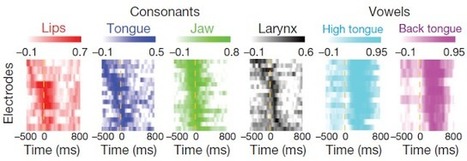Brown’s wireless BCI, fashioned out of hermetically sealed titanium, looks a lot like a pacemaker. Inside there’s a li-ion battery, an inductive (wireless) charging loop, a chip that digitizes the signals from your brain, and an antenna for transmitting those neural spikes to a nearby computer. The BCI is connected to a small chip with 100 electrodes protruding from it, which, in this study, was embedded in the somatosensory cortex or motor cortex. These 100 electrodes produce a lot of data, which the BCI transmits at 24Mbps over the 3.2 and 3.8GHz bands to a receiver that is one meter away. The BCI’s battery takes two hours to charge via wireless inductive charging, and then has enough juice to last for six hours of use.
Via Szabolcs Kósa, Amy Cross, Jim Lerman



 Your new post is loading...
Your new post is loading...









Where do we go?!!!
These 100 electrodes produce a lot of data, which the BCI transmits at 24Mbps over the 3.2 and 3.8GHz bands to a receiver that is one meter away.